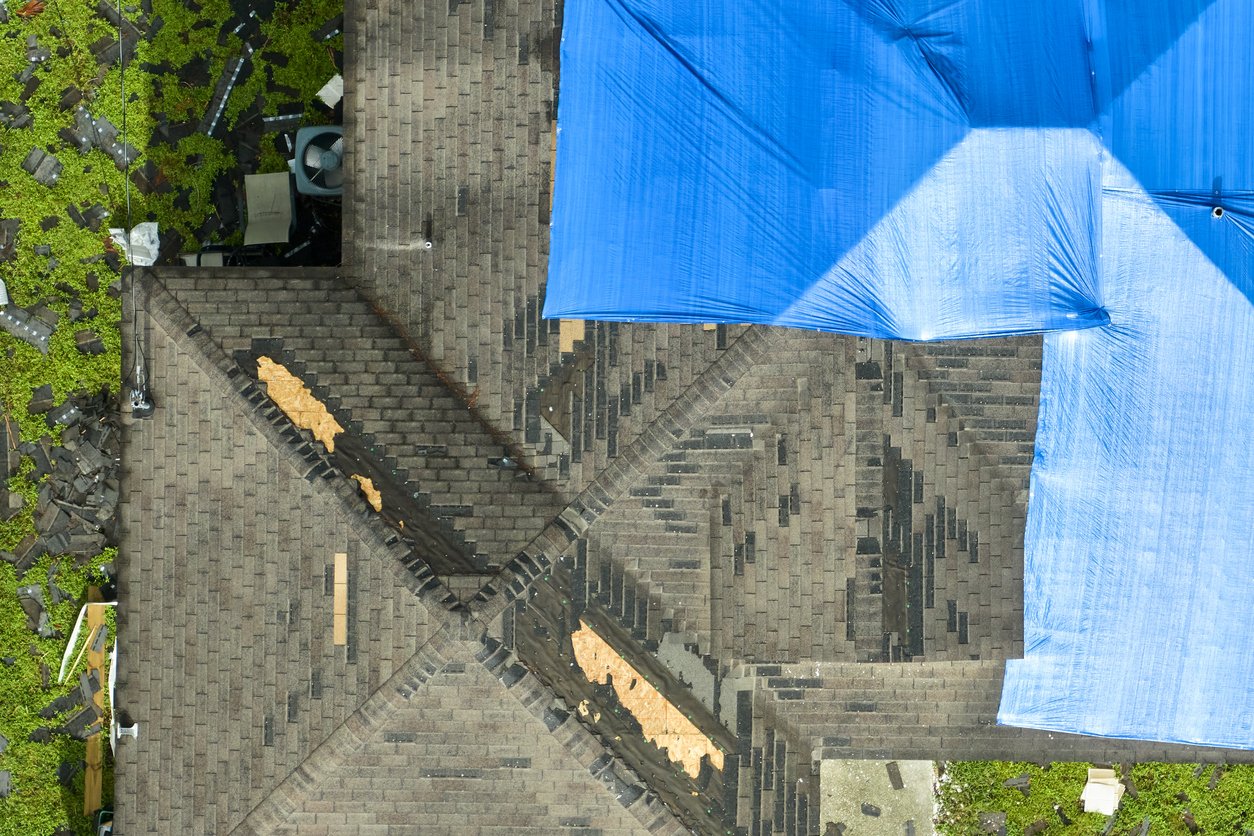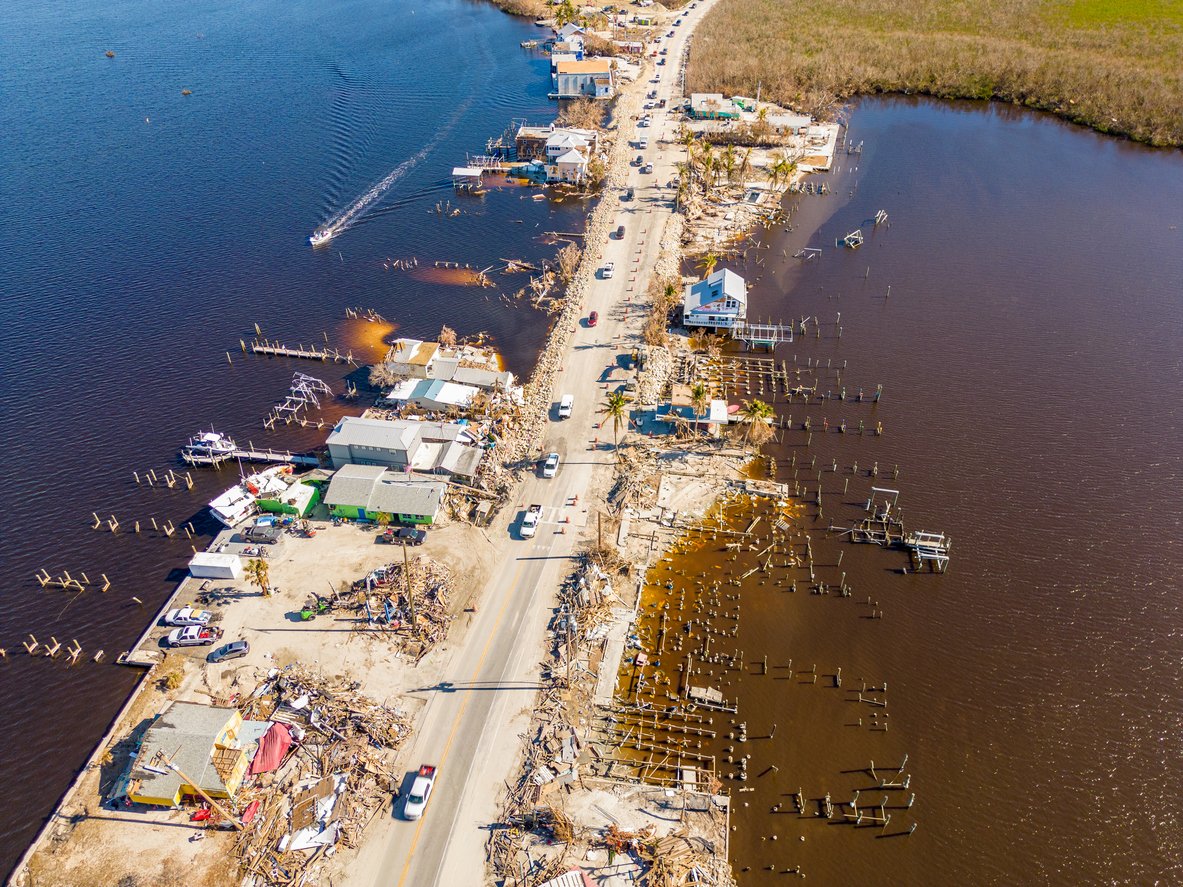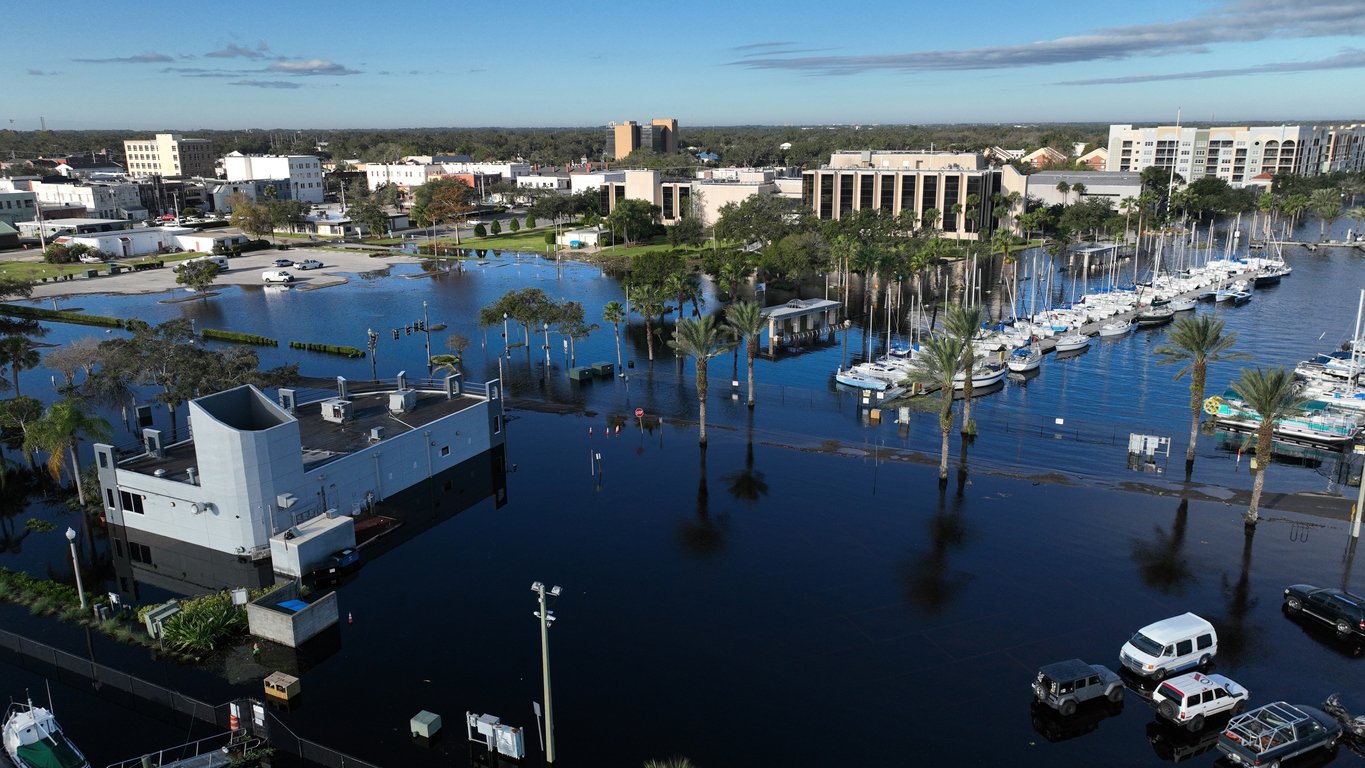Tampa Florida Public Insurance Adjusters
We are currently assisting businesses with major property damage claims from Hurricane Helene throughout Southwest Florida. Make us your first call at 813-421-1357 (24/7) for large commercial business claims.
Our team is ready to help Tampa, FL large commercial operations, business owners, condominium associations, and homeowners with hurricane damages — flood, wind, and business interruption insurance claims in these areas:
Davis Islands
Gandy Sun Bay Southwest
Historic Hyde Park
Bayshore Beautiful
Parkland Estates / New Suburb Beautiful
Belmar Shore
Culbreath Isles / Beach Park
Dana Shores
Channel District
Palma Ceia
For other areas not listed above please call us today at 813-421-1357.
Global Patriot Adjusters is a company built to complete the single goal of making sure every dollar deserved to clients from an insurance claim, is given to them. We maintain the best reputation in the private insurance adjuster business because we take every claim for every client as a project with personal ownership and accountability.
We work for you to maximize your home and business property damage insurance claims!
What Role Does FEMA Play in Assisting with Hurricane Damage in Tampa, FL?
When a hurricane hits Tampa, the Federal Emergency Management Agency (FEMA) can provide essential support to individuals, businesses, and communities affected by the storm. While FEMA is not a replacement for insurance, it can help cover some immediate needs, making a critical difference during recovery. Here’s an in-depth look at FEMA’s role in hurricane damage assistance, what types of support are available, and why working with a public adjuster, like Global Patriot Adjusters, can help you maximize your insurance coverage alongside FEMA aid.
Types of Assistance FEMA Provides
Individual Assistance (IA)
Immediate Needs and Temporary Housing: FEMA offers Individual Assistance to help people displaced by hurricanes find temporary housing, covering expenses like hotel stays or short-term rentals.
Home Repairs: For homeowners, FEMA can provide limited funds for basic repairs to make your home safe and habitable. This might include repairs to walls, floors, roofs, or windows, but generally does not cover extensive structural work.
Essential Personal Property Replacement: FEMA may also offer assistance to replace essential items like clothing, appliances, and furniture if they’re damaged beyond use. However, these funds are generally modest and are not designed to fully replace high-value items.
Disaster Unemployment Assistance (DUA)
Support for Affected Workers: FEMA provides Disaster Unemployment Assistance to those who lose their jobs or cannot work due to the hurricane’s impact. This assistance is particularly helpful for people in heavily impacted industries, such as tourism, hospitality, and construction.
Self-Employed Individuals: For self-employed individuals, DUA offers temporary financial aid to replace lost income during the recovery period, allowing them to meet basic living expenses while they rebuild their business or find new work.
Public Assistance for Communities
Community Recovery Funds: FEMA allocates Public Assistance funds to local governments and eligible nonprofits to support the repair and rebuilding of critical infrastructure like roads, bridges, public utilities, and schools.
Debris Removal and Emergency Services: FEMA’s Public Assistance also covers costs for community debris removal, emergency protective measures, and other essential services to help communities get back on their feet faster.
Hazard Mitigation Assistance (HMA)
Funding for Preventive Measures: FEMA’s Hazard Mitigation Assistance is designed to help reduce the long-term risks associated with hurricanes. This funding supports structural improvements like hurricane-proof windows, reinforced roofing, and flood barriers.
Availability: While HMA funds are not immediate, they can be beneficial for community resilience planning and can reduce the potential for damage in future hurricanes.
How FEMA Support Differs from Insurance Coverage
Scope and Limitations
Basic Needs Only: FEMA’s assistance programs are designed to cover only essential needs and emergency repairs. They’re not a substitute for insurance and generally won’t cover the full cost of repairs or property replacement.
Temporary Solution: FEMA assistance is intended to stabilize your situation and get you back on your feet. Unlike an insurance claim, which can cover both structural and personal property losses more comprehensively, FEMA’s aid is limited and does not aim to restore properties fully.
Eligibility Requirements
Income-Based Considerations: FEMA assistance is often need-based, and eligibility may depend on income level, especially for home repairs and personal property replacement.
Documentation of Losses: FEMA requires extensive documentation to verify damages and need. They may require proof of residence, income information, and photographs of the damage. A public adjuster can help organize and prepare documentation to avoid delays in both FEMA and insurance claims.
Timing of Funds
Faster Disbursement of Initial Aid: FEMA assistance is typically dispersed faster than an insurance payout, helping to meet immediate needs like temporary housing and essential repairs.
Supplemental Role: FEMA’s funds are considered supplemental to insurance, so those who have insurance are generally required to file a claim before seeking FEMA assistance. For uninsured or underinsured residents, FEMA may provide more substantial aid.
Maximizing Both FEMA Aid and Insurance Payouts
File Your Insurance Claim First
Primary Source of Recovery: Insurance is your primary source of funding for hurricane-related damages. File your insurance claim as soon as possible and document everything. FEMA typically expects you to have explored your insurance options before applying for federal aid.
Professional Assistance: A public adjuster, like Global Patriot Adjusters, can help make sure every detail of your insurance claim is accounted for, maximizing the payout and reducing your out-of-pocket expenses.
Filing a FEMA Claim for Uncovered Costs
Supplemental Costs: For costs not covered by your insurance, such as deductibles or certain out-of-pocket expenses, FEMA may provide additional funds. Keep receipts and records of all disaster-related expenses, as FEMA will request documentation for each item you wish to claim.
FEMA’s Duplicate Payment Rules: FEMA cannot pay for damages or repairs that are already covered by insurance. However, if your insurance company denies certain parts of your claim or only partially covers damages, FEMA may help fill those gaps.
Consider Long-Term Mitigation Support
Resilience Funding: FEMA’s Hazard Mitigation Assistance can support long-term improvements to your property, like flood barriers or storm-resistant windows, which can reduce potential damage in future hurricanes.
Insurance Implications: Some insurance policies may offer premium discounts for making these types of improvements, so it’s worth exploring if this might apply after receiving FEMA’s mitigation support.
How Global Patriot Adjusters Can Help You Maximize Recovery
Navigating both FEMA aid and insurance claims can be complex, but Global Patriot Adjusters can streamline the process. Here’s how they assist:
Free Claims Consult: Get a full review of your policy and damage assessment to understand all available insurance benefits and potential FEMA support.
Detailed Documentation: Global Patriot Adjusters will ensure all damages are well-documented with photos, repair estimates, and detailed reports to strengthen both your insurance and FEMA claims.
Expert Negotiation for Higher Payouts: With experience in hurricane-related claims, they can negotiate directly with insurers to maximize your settlement, ensuring that you receive the full amount you’re entitled to.
While FEMA provides critical support, it’s not meant to fully replace insurance. If you’re in Tampa and dealing with hurricane damage, contact Global Patriot Adjusters for a free claims consult to ensure you’re taking full advantage of your insurance coverage and any available FEMA aid. They’ll work with you to make sure nothing is missed, helping you rebuild fully and get back to normal.
We specialize in water damage, wind damage, structural damage, fire damage, mold and asbestos damage and more.
Maximizing Your Wind Damage Claim with a Public Insurance Adjuster in Tampa, FL
Wind damage can pose significant challenges for condominium owners in Tampa, FL. From structural damage to shattered windows, the aftermath of severe storms can be overwhelming. Filing an insurance claim for wind damage can be complex and stressful. Hiring a public insurance adjuster can help ensure you receive the full compensation you deserve. Here’s how a public adjuster can assist you and tips to maximize your wind damage claim.
Benefits of Hiring a Public Insurance Adjuster
Expert Knowledge: Public adjusters are licensed professionals who specialize in managing insurance claims. They have in-depth knowledge of policy details and can identify all available coverages.
Detailed Documentation: Public adjusters meticulously document all wind damage, capturing every detail. This thorough documentation strengthens your claim and prevents undervaluation by the insurance company.
Skilled Negotiation: Public adjusters negotiate directly with your insurance company on your behalf, advocating for a fair settlement. Their experience often results in higher compensation compared to handling the claim alone.
Tips for Condominium Owners
Immediate Action: Contact a public insurance adjuster as soon as you notice wind damage. Early involvement allows the adjuster to gather timely evidence and prevent further issues.
Maintain Records: Keep detailed records of all communications with your insurance company. Take photos and videos of the wind damage from multiple angles, and save any relevant documents, such as repair estimates, invoices, and previous maintenance records. This evidence is crucial for substantiating your claim.
Comprehensive Assessment: Work with your adjuster to perform a thorough assessment of the wind damage. Ensure both visible and hidden damages are accounted for, as some issues may not be immediately apparent.
Understand Your Policy: Make sure you understand the terms and conditions of your insurance policy. Your public adjuster can help interpret these terms and guide you on the necessary steps to avoid jeopardizing your claim.
Choose a Reputable Adjuster: Select a reputable public adjuster by checking credentials, reviews, and references. A trustworthy professional ensures a smoother claims process and better outcomes.
By hiring a public insurance adjuster in Tampa, FL, you can alleviate the stress of filing a wind damage claim and improve your chances of receiving fair compensation. Their expertise, detailed documentation, and negotiation skills are invaluable in helping you restore your condominium. Don’t let the complexities of the claims process overwhelm you—get the professional support you need to navigate it effectively.
Call our professional adjusters 24/7 at: 813-421-1357
Hurricane Restoration Services for Business Owners in Tampa, FL
Operating a business in Tampa, FL, brings many opportunities, but it also comes with the risk of hurricanes and severe storms. These natural disasters can cause significant damage to your property, disrupt operations, and pose serious safety risks. Knowing which local services to contact for quick and professional help is crucial for a swift recovery. Here’s a guide to essential hurricane restoration services available for business owners in Tampa.
Structural Damage Repair
Hurricanes can cause severe structural damage to buildings, compromising safety and functionality. Immediate professional repair is crucial to restore your business operations swiftly.
1. Tampa Structural Repairs: Specializing in assessing and repairing structural damage caused by hurricanes, Tampa Structural Repairs ensures your business meets safety standards and is quickly restored to operational status.
2. Coastal Building Restoration: Offering comprehensive structural repair services, Coastal Building Restoration focuses on restoring the integrity and safety of your building, allowing you to resume business operations as soon as possible.
Tree Damage Removal
Fallen trees can cause significant damage to buildings, vehicles, and power lines. Prompt removal and cleanup are essential to ensure safety and restore normalcy.
1. Tampa Tree Services: Specializing in storm-related tree damage, Tampa Tree Services provides efficient tree removal and cleanup. Their experienced team works quickly to clear your property and mitigate further risks.
2. Arbor Care Experts: Offering emergency services, Arbor Care Experts safely remove fallen trees and debris, securing your property and minimizing disruption to your business operations.
Roof Damage Repair
Roof damage is common after hurricanes, requiring immediate attention to prevent further water damage and structural issues.
1. Tampa Roofing Solutions: This company offers expert roof repair services, addressing storm damage swiftly to protect your commercial property from additional weather-related problems. They handle everything from minor repairs to full roof replacements.
2. Hurricane Roofing Pros: Specializing in hurricane damage, Hurricane Roofing Pros provide high-quality roof repair and replacement services. They use durable materials designed to withstand future storms, ensuring long-term protection for your building.
Water Pump Out Services
Flooding can cause severe water damage to your property, necessitating prompt water removal to prevent mold growth and structural deterioration.
1. Rapid Response Water Removal: Offering 24/7 emergency water pump out services, Rapid Response uses advanced equipment to minimize water damage and expedite the drying process. Their quick action helps prevent further issues such as mold growth.
2. AquaClean Flood Services: Known for their efficient and thorough water removal, AquaClean ensures your commercial property is dried out and safe from further damage. Their experienced technicians work diligently to restore your property to its pre-storm condition.
General Hurricane Restoration Services
Comprehensive hurricane restoration services cover a range of needs from debris removal to complete structural repairs, ensuring your business is fully restored.
1. Tampa Restoration: This company provides full-service hurricane restoration, including debris cleanup, structural repairs, and water damage restoration. Their experienced team ensures your property is thoroughly cleaned and repaired, making it safe for you, your employees, and customers.
2. SERVPRO of Tampa: A trusted name in disaster recovery, SERVPRO offers extensive storm damage restoration services. They handle everything from water extraction to complete property restoration, helping you recover quickly and efficiently.
Recovering from hurricane and storm damage requires immediate and professional attention. By partnering with trusted local companies specializing in structural damage repair, tree damage removal, roof repair, water pump out services, and general restoration, business owners in Tampa, FL, can ensure their properties are restored swiftly and safely. Keep these contacts handy to protect your business from the unpredictable forces of nature. Stay prepared and know that help is available when you need it most. Taking proactive measures and knowing which services to rely on can minimize the impact of future storms and maintain the safety and functionality of your business.
Call our professional adjusters 24/7 at: 813-421-1357
About Tampa Florida
Tampa, FL is a major city in, and the county seat of, Hillsborough County, Florida, United States. It is on the west coast of Florida on Tampa Bay, near the Gulf of Mexico. Tampa is the largest city in the Tampa Bay Area. With an estimated population of 399,700 in 2019, Tampa is the 48th most populous city in the U.S. and the third-largest city in Florida after Miami and Jacksonville. The bay's port is the largest in the state, near downtown's Channel District. Bayshore Boulevard runs along the bay and is east of the historic Hyde Park neighborhood.
History
Tampa grew considerably as a result of World War II. Prior to the United States' involvement in the conflict, construction began on MacDill Field, which served as the main base for Army Air Corps and later Army Air Forces operations just before and during World War II, with multiple auxiliary airfields around the Tampa Bay area and surrounding counties. At the end of the war, MacDill remained an active military installation, while the auxiliary fields reverted to civilian control. Two of these auxiliary fields would later become the present-day Tampa International Airport and St. Pete–Clearwater International Airport. With the establishment of an independent U.S. Air Force in 1947, MacDill Field became MacDill Air Force Base.
During the 1950s and 1960s, Tampa saw record-setting population growth that has not been seen since. This growth spurred the expansion of the city's highways and bridges, bringing thousands into the city and creating opportunities for Tampa business owners, who welcomed the influx of tourists and new residents. It was during this time period in the city's history that two of the most popular tourist attractions in the area were developed – Busch Gardens and Lowry Park. Many of the well-known institutions that play an important role in the economic development of the city were established during this time period.
Tropical storms
Though threatened by tropical systems almost every hurricane season (which runs from June 1 to November 30), Tampa seldom feels major effects from tropical storms or hurricanes. No hurricane has made landfall in the immediate Tampa Bay area since the 1921 Tampa Bay hurricane made landfall near Tarpon Springs and caused extensive damage throughout the region.
Three major hurricanes have seriously threatened Tampa in the ensuing decades. Hurricane Donna (1960), Hurricane Charley (2004), and Hurricane Irma (2017) were each forecast to make landfall in Tampa Bay from the southwest, a worst-case track that would result in maximum storm surges throughout the region. However, all three storms turned to the east and made landfall in southwest Florida instead. Irma had the greatest effect on Tampa. It made landfall near Marco Island on September 10, 2017, and moved due north, passing through eastern Hillsborough County as a Category 1 storm. Irma caused substantial damage to the area, particularly to the electrical grid.
Source: Wikipedia, Tampa, Florida










